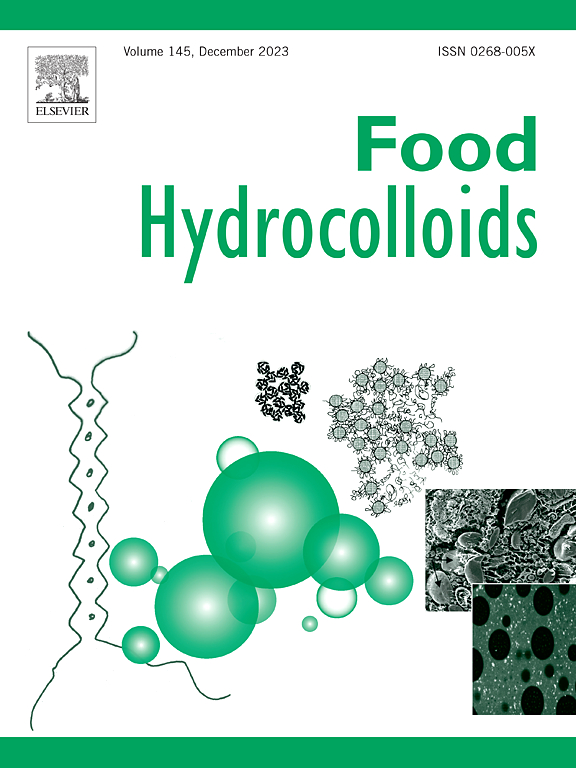Micro-phase separation and rheological behavior of whey protein isolate/gellan gum mixed gels
IF 11
1区 农林科学
Q1 CHEMISTRY, APPLIED
引用次数: 0
Abstract
This study was based on the cold gelation process of whey protein isolate (WPI) induced by acid. By regulating the addition concentration of low-acyl gellan gum (LGG), WPI/LGG mixed gel systems with different micro-phase separation behaviors were prepared, and the regulatory mechanism of LGG concentration on the micro-phase separation of the gel was systematically explored. The experiments showed that the change in LGG concentration significantly affected the cold gelation characteristics and dynamic rheological behavior of the mixed gel. Further, this study innovatively introduced a fractional derivative model to quantitatively characterize the linear viscoelastic response of WPI/LGG mixed gels, successfully capturing the dynamic laws of the complex modulus, steady state shear viscosity, and creep response with the change in LGG concentration. The model prediction results were highly consistent with the experimental data (R2 > 0.98), demonstrating the potential of the fractional derivative model in modeling and predicting the linear viscoelastic response of WPI/polysaccharide mixed gels. Secondly, by analyzing the constitutive parameters in the model - quasi-properties and fractional order, a phase space map was constructed that could correlate gel firmness with structural characteristics, revealing the quantitative mapping relationship between LGG concentration and the macroscopic properties of the gel. That is, based on the appropriate structural components and combined with the prediction of the mathematical model, the desired firmness texture effect can be achieved, thereby providing a reference for the application of LGG as a gel modifier in the food industry.

求助全文
约1分钟内获得全文
求助全文
来源期刊

Food Hydrocolloids
工程技术-食品科技
CiteScore
19.90
自引率
14.00%
发文量
871
审稿时长
37 days
期刊介绍:
Food Hydrocolloids publishes original and innovative research focused on the characterization, functional properties, and applications of hydrocolloid materials used in food products. These hydrocolloids, defined as polysaccharides and proteins of commercial importance, are added to control aspects such as texture, stability, rheology, and sensory properties. The research's primary emphasis should be on the hydrocolloids themselves, with thorough descriptions of their source, nature, and physicochemical characteristics. Manuscripts are expected to clearly outline specific aims and objectives, include a fundamental discussion of research findings at the molecular level, and address the significance of the results. Studies on hydrocolloids in complex formulations should concentrate on their overall properties and mechanisms of action, while simple formulation development studies may not be considered for publication.
The main areas of interest are:
-Chemical and physicochemical characterisation
Thermal properties including glass transitions and conformational changes-
Rheological properties including viscosity, viscoelastic properties and gelation behaviour-
The influence on organoleptic properties-
Interfacial properties including stabilisation of dispersions, emulsions and foams-
Film forming properties with application to edible films and active packaging-
Encapsulation and controlled release of active compounds-
The influence on health including their role as dietary fibre-
Manipulation of hydrocolloid structure and functionality through chemical, biochemical and physical processes-
New hydrocolloids and hydrocolloid sources of commercial potential.
The Journal also publishes Review articles that provide an overview of the latest developments in topics of specific interest to researchers in this field of activity.
 求助内容:
求助内容: 应助结果提醒方式:
应助结果提醒方式:


